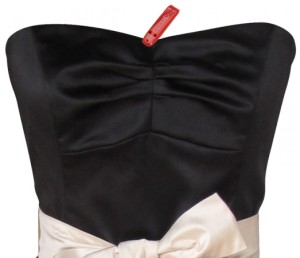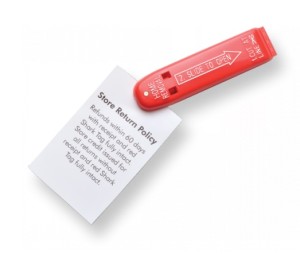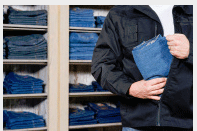 According to the National Retail Federation’s annual survey, it is estimated the industry loses approximately $9.1 billion yearly in return fraud. This includes refunds on merchandising that has been stolen and a practice like “wardrobing” that is costing retailers this incredible amount. Those incidents are done by employees as well as shoppers and shoplifters. To read more about this topic follow the links below for more information.
According to the National Retail Federation’s annual survey, it is estimated the industry loses approximately $9.1 billion yearly in return fraud. This includes refunds on merchandising that has been stolen and a practice like “wardrobing” that is costing retailers this incredible amount. Those incidents are done by employees as well as shoppers and shoplifters. To read more about this topic follow the links below for more information.
NOT-SO-HAPPY RETURNS: RETAIL FEDERATION HIGHLIGHTS “WARDROBING” COSTS
In a new survey, the National Retail Federation says that holiday-return fraud could end up costing stores billions this year. The worst part? This scam is more organized than ever.
The holidays are over, but stores big and small will be dealing with more than the memories.
That’s according to the National Retail Federation (NRF), which reported late last month that during the holiday season alone, retailers could face as much as $3.8 billion in lost revenue from fraudulent returns, an increase from $3.4 billion in 2013 and a big chunk of the estimated $10.9 billion in return fraud in 2014 as a whole.
The organization’s 2014 Return Fraud Survey [PDF], which gathered responses from loss-prevention executives at 60 retailers, shows that retailers suspect that 5.5 percent of holiday returns are fraudulent. And while technology has helped curb illegitimate returns, NRF said, there’s only so much companies can do about retail fraud, which is often suspected to be the work of crime rings.
Eliminate the Practice of Wardrobing in Your Store
Well here’s a new one to me. The art of wardrobing. It’s a term coined for shoppers who buy merchandise with the full intent of using it, then returning it for a full refund. Take a read of the article as the insight is fascinating.
I was astounded to learn that “nearly two-thirds of merchants had items wardrobed in 2007, up from 56 percent the year before, the first year the National Retail Federation (NRF) started tracking the trend,” according to the article.
The term wardrobing was chosen (I’m guessing) because it stems from clothing that’s been purchased, worn and then returned. But the article points out that wardrobing has taken on a broader meaning and is now applied to any merchandise that’s been used and then returned.
So how big is wardrobing? The article points out that “Wardrobers want to rent the things they want or need for free, which amounts to fraud, said Richard Hollinger, a criminology professor at the University of Florida who specializes in retail theft. He said return fraud, which includes wardrobing, fake receipts, and other practices, cost retailers an estimated $10.8 billion last year, up from $9.6 billion in 2006.”
RETURN FRAUD COST 9.1 BILLION IN 2013
Criminals trying to get refunds on stolen merchandise and customers engaged in practices like “wardrobing” cost retailers an estimated $9.1 billion in return fraud last year, according to NRF’s annual survey.
“While coverage of this issue paints return fraud as one of the less severe retail crimes, the fact of the matter is that returning used or stolen merchandise — or even using false tender to purchase items — is fraud, period,” NRF vice president for loss prevention Rich Mellor said in a release accompanying the survey. “Efforts to combat fraudulent activity are slowly starting to work, but criminals are becoming more savvy and technologically advanced in their methods.”
The dollar amount of fraud was up 2.8 percent from 2012, but the proportion of returns believed to be fraudulent (3.4 percent) remained the same. During the just-finished holiday season, fraud totaled an estimated $3.4 billion.
Fraud was experienced by virtually all retailers, with stolen merchandise involved in 95 percent of cases. Employee fraud accounted for 93 percent of incidents; 69 percent were returns of items purchased with fraudulent payment like stolen or counterfeit gift cards. Wardrobing — where customers typically purchase a dress for a party or a big-screen television for the Super Bowl and return the item after it has been used — accounted for 62 percent.









